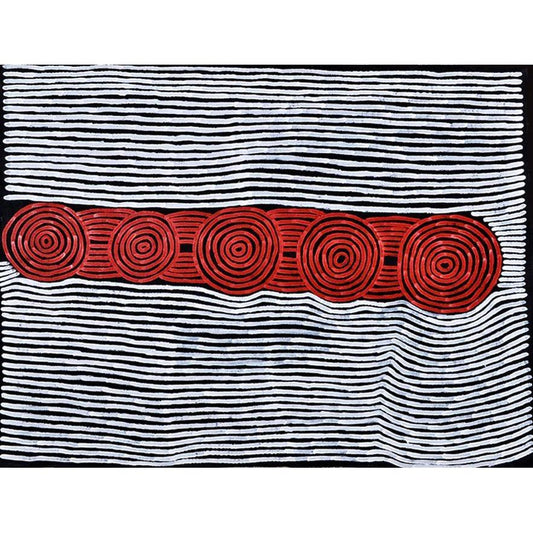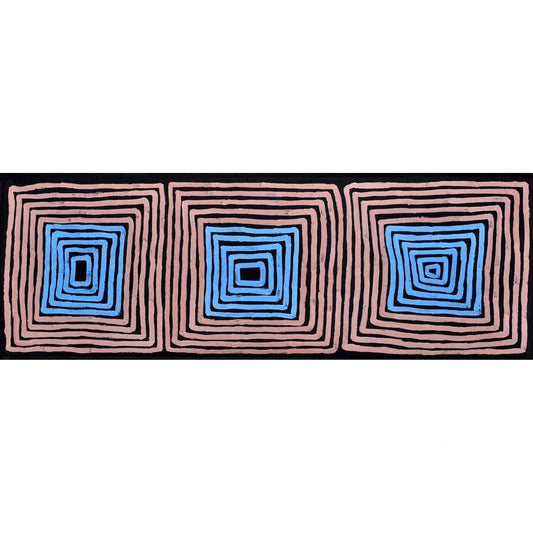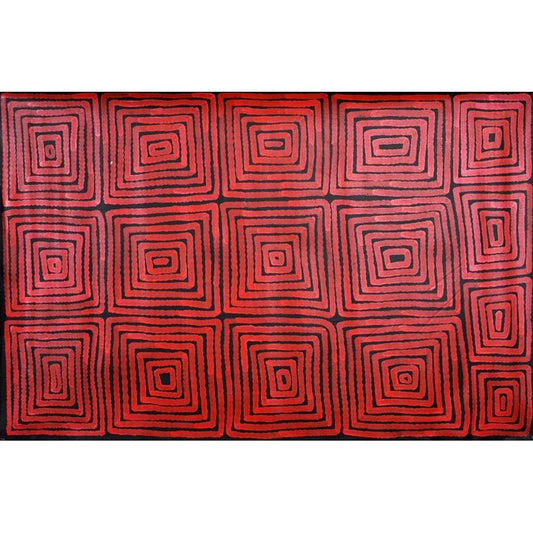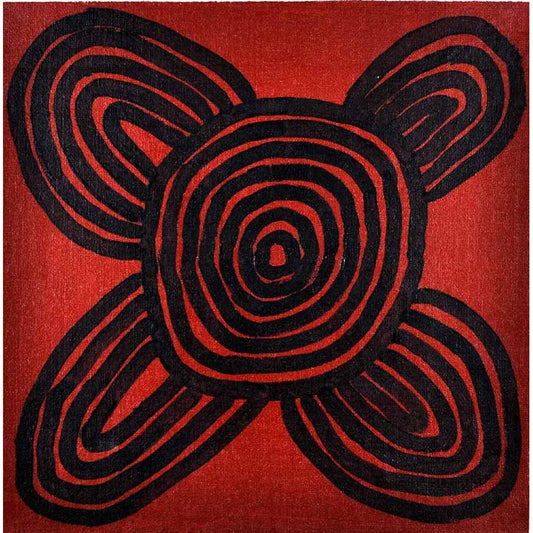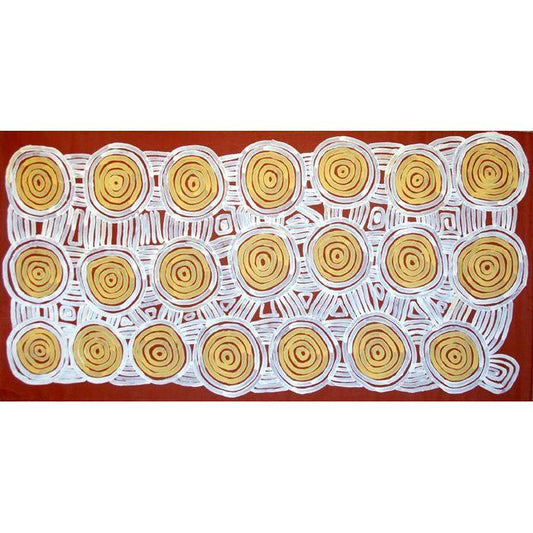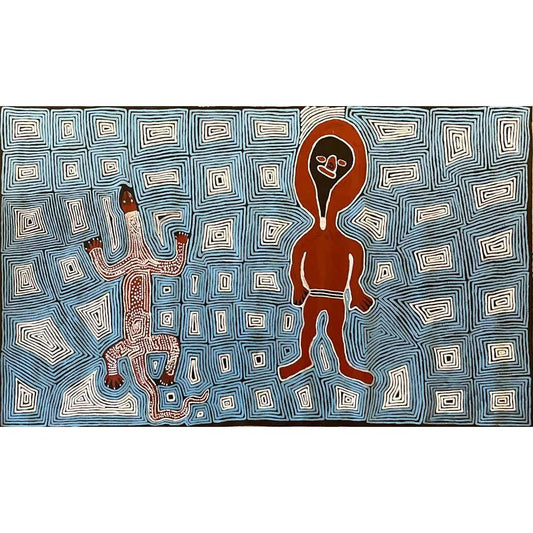Collection: Ronnie Tjampitjinpa
Ronnie Tjampitjinpa was born around 1943 near Muyinnga, west of the Kintore Ranges in the Northern Territory. His family moved extensively throughout Pintupi Country living the traditional ways his people have lived for over 40,000 years.
He was initiated into manhood in the early 1950’s. Shortly afterwards drought conditions encouraged Ronnie and his family to move towards Haasts Bluff and then later to join relatives at the newly settled Papunya Community. Here he found work as a fencer making yards for cattle in surrounding areas.
It was during Ronnie’s time at Papunya that he started to take an interest in the Papunya Tula Desert Art Movement (formed in the early 70’s). Not long after he started painting Ronnie began discussing with various people the idea of moving back to and living on traditional lands. For Ronnie this goal became reality in 1981 with the establishment of the Kintore settlement.
By being more in touch with his traditional lands and the Dreaming, Ronnie soon emerged as one of Papunya Tula’s major artists. His work reflects his direct ties with his culture, retaining a purity that many other Aboriginal artists have not achieved. Ronnie Tjampitjinpa’s work follows the strict Pintupi style of strong circles joined together by connecting lines - a style relating to people, the land and the Dreamtime.
Ronnie Tjampitjinpa's work has a simplicity that makes it appealing yet mysterious as the uninitiated try to understand what it is he paints. By painting Dreamtime he is helping to resurrect Aboriginal culture as a whole and allow outsiders to learn about one of the oldest traditions in the world. This work is important to the spirituality of the land, and bridging the gap between European and traditional Aboriginal life. It is a process that both exposes and heals the gap.
In 2008 and 2009 Ronnie Tjampitjinpa was listed as one of the 50 Most Collectable Artists by the Australian Art Collector magazine.
Sadly, Ronnie passed away in June 2023.
